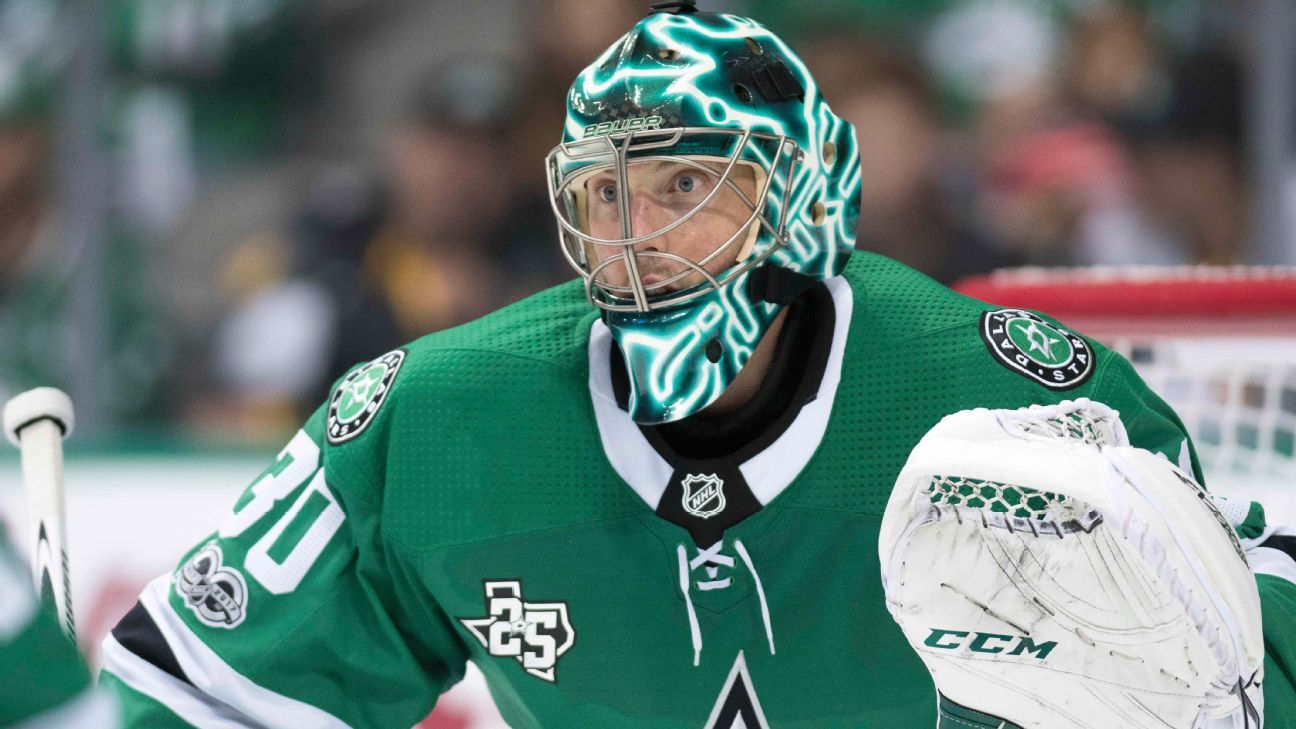Changes in equipment can be uncomfortable for an NHL goalie, one of sports’ ultimate creatures of habit. But the league’s latest tweak to goalie gear has them feeling hurt, quite literally.
“You honestly don’t want to get hit in the arm. It leaves bruises,” Dallas Stars goalie Ben Bishop told ESPN this week. “It’s like wearing a shin guard on your arm, and the pucks are coming 100 mph. It hurts.”
At issue are the new chest protectors mandated by the NHL, in conjunction with the NHLPA, for the 2018-19 season. The overall size of the chest protector wasn’t changed, but they reduced the size of the shoulders by about an inch, making them more formfitting, while also streamlining the padding around the goaltender’s arms. This was part of an ongoing process, including last season’s reduction in pad size, to make goalies look closer to their actual size rather than being inflated by their gear.
“[The chest protectors] don’t measure smaller. They just tweaked a couple of things, like the protection around the arms. They want it to look smaller,” Bishop said.
“It’s not like back in the early 2000s where the goalies are using gear to gain an advantage. We’re wearing it for protection. No one’s making shoulder saves because the gear’s bigger. Did the players say we looked too big? The goalies are getting bigger. And it’s taking away credit from the goalies for being good. That’s their fallback: The goalies are only good because of the equipment, which is not true.”
For years, there has been a tug-of-war between the NHL and its goalies when it comes to a reduction in equipment size. The league believes with more net to shoot at, and without overinflated goalies, skaters will score more goals. Goalies believe that reductions in equipment size put their safety at risk. The chest protector tweak, it seems, has validated those concerns.
“I’m getting bruised like crazy on my arms. I think that’s the biggest issue, they take away padding in the arms. It seems like every shot that you take that’s not clean on your blocker or in your glove, it’s leaving a mark,” Philadelphia Flyers goalie Brian Elliott told the Courier Post earlier this season. “They wanted more ‘formfitting,’ but when you have more formfitting there’s no give. There’s no air between you and your pads, so the puck is hitting your pad and at the same time it’s hitting your bones and your flesh so there’s no cushion.”
The results have been painful. “I’ve never had the bruises on my arms [before], but now it feels like every other shot goes there. If it goes there, it’s going to be sore,” Columbus Blue Jackets goalie Sergei Bobrovsky told the Columbus Dispatch. “You start to be afraid of pucks, actually, especially in the practices. You get bruises in [the arms]. It’s terrible.”
Bishop said he expects to compensate for the new equipment by wearing his old chest protector in practice, and the new ones in games. “It’s got more padding. In practice you get 400 shots. In a game, you can suck it up. If you get one in a bad spot, you get one,” he said.
Another issue for the goalies: The new chest protectors were delayed due to the manufacturing process, giving them little time to break them in. “The manufacturers didn’t get us the new equipment until about a month before the season. So you don’t even get time to adjust,” Bishop said.
But Bishop believes goalies will eventually adjust, a sentiment echoed by NHL vice president of hockey operations Kay Whitmore, who is in charge of goaltender equipment changes. “We changed other things to make goaltenders more mobile. At first they didn’t agree with it, but once they started playing they felt faster, quicker and actually got better,” he told the Canadian Press in September.
Whitmore, who played professionally for 15 years, said NHL goalies shouldn’t have an expectation that equipment changes put them at risk. “I don’t want to see guys go on the ice fearful of getting hit with pucks, because that’s what they do for a living,” he said.
Bishop, who considers Whitmore a friend, just hopes the transition to smaller gear gets a little less painful.
“They’re trying to make it as fluid a process as possible. Whenever there’s change, there’s resistance. But we’ll get used to it,” he said.

